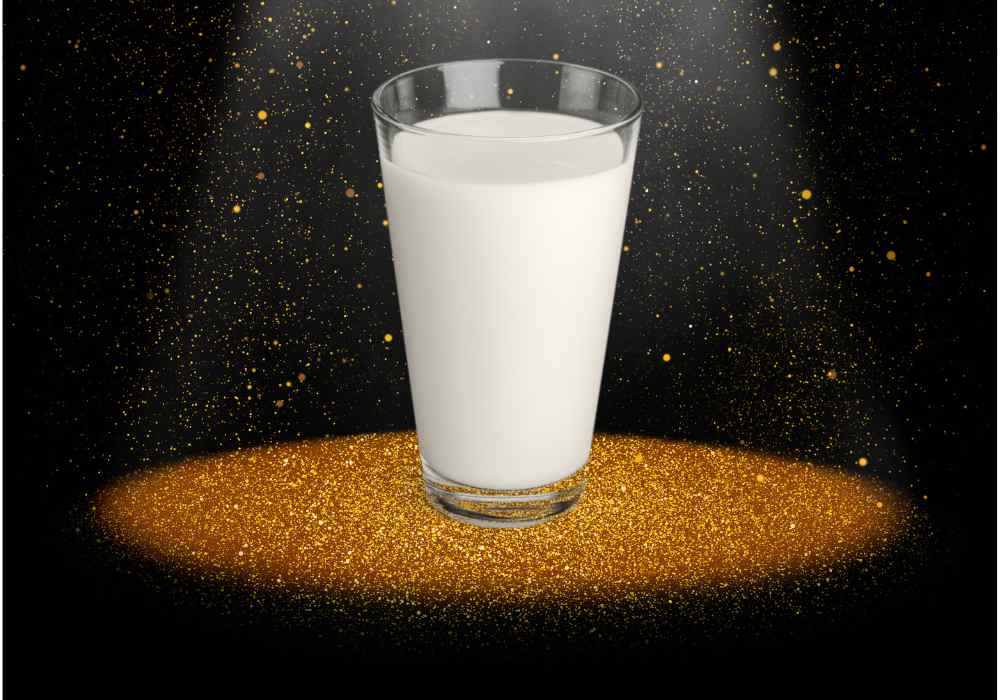This post was last updated on June 2nd, 2025 at 07:35 am
Our family has been enjoying whole milk for years, which is why I’ve taken an interest in the beverage’s sudden popularity among legislators who want to see it offered at schools once again. I buy it for several reasons. For one thing, it tastes better than 1% milk, the variety available at most schools today. Also, a strong case can be made that whole milk is ultimately healthier than reduced-fat alternatives, though that’s a somewhat controversial claim. I’ll talk more about that topic later.
From strictly an economic standpoint, whole milk offers more value than the other reduced-fat varieties. Depending on the grocery store, whole milk costs as much as or only a little more than skim, 1%, or 2%, which are stripped of their fat content to varying degrees. That fat goes into other products, such as butter or cream. When you buy whole milk, you’re paying for the product that most closely resembles what came from the cow. It’s essentially a whole food.
The good news on saturated fat in whole milk
Whole milk fell out of favor among nutritionists years ago amid concerns about rising obesity rates and a link shown between heart disease and saturated fat consumption. However, that link has been called into question in recent years, particularly as it relates to dairy fat. Some lawmakers and doctors want to return whole milk to school menus, in part, because they realize having more milk options at school is potentially better for kids’ health.
Dr. Keith T. Ayoob, of the Albert Einstein College of Medicine in New York, testified at an April U.S. Senate hearing about how his views toward whole milk have changed over the years. He explained that recent studies have found no link between consumption of whole milk and 2% milk and increased risk of heart-related problems. New research also isn’t finding connections between whole milk and childhood obesity.
Here’s why Dr. Ayoob believes whole milk isn’t contributing to our nation’s health problems: In dairy, saturated fat is “bound to protein, occurring in a ‘dairy matrix.’ In this form, the body appears to handle it differently.” He told the Senate Committee on Agriculture, Nutrition, and Forestry that saturated fat within this “dairy matrix” does not have the same “negative cardiometabolic effects that other saturated fats do. When they are in a protein-fat network that occurs in dairy foods like milk, yogurt, and cheese, they appear not to increase bad cholesterol and to lower the harmful portion of bad cholesterol.”
In other words, not all saturated fat is created equal, and dairy products appear to deliver a good kind of saturated fat, especially for growing children.
Why whole milk isn’t part of the obesity problem
In terms of addressing our nation’s obesity epidemic, whole milk (with a 3.25% fat content) and 2% milk took some of the blame years ago, but it’s now clear that eliminating these products from schools had no effect on reducing childhood obesity. One possible explanation is that whole milk has a satiating effect, meaning it tells your body it feels full.
“Many of my patients over the years, especially adolescents and teens, have told me that the school meal doesn’t always leave them feeling full,” Dr. Ayoob told the Senate committee. “The relatively small amount of fat in whole milk, amounting to two scant teaspoons of total fat of which only about a teaspoon is saturated, can provide a satiating effect for some students, especially those who consume whole milk and reduced fat milk (2%) at home.”
I can speak to this from experience. One of our kids drinks whole milk at home but must switch to 1% at school. With nearly three times less fat than whole milk, 1% feels like drinking water. I have sometimes sent whole milk in a thermos, but I admittedly often forget to pack it. It would be far easier for parents if schools simply started offering whole milk.
Read: Whole foods are the stars of the frugalmatic diet
But feel free to ax chocolate milk
Now, I’ll admit to being a bit biased because I hail from the dairy state, Wisconsin. (Go Badgers!) But to be clear, I’m no shill for the dairy industry. In returning whole milk to schools, I’d completely favor eliminating chocolate milk, which is loaded with added sugar, from school menus.
The argument for chocolate milk is that it encourages kids who otherwise wouldn’t drink plain milk to drink milk. However, I’d argue that consuming large amounts of sugar to obtain the nutritional benefits of milk isn’t worth it. Perhaps a good compromise would be to offer a version of chocolate milk containing half as much sugar as chocolate milk currently contains. It is, in my opinion, unnecessarily sweet.
Playing the saturated fat shell game
Also in my opinion, skim and 1% milk options encourage people to turn their diets into a shell game of sorts. They deny themselves saturated fat by drinking skim or 1%, but then make up the difference by later eating processed junk foods high in (you guessed it) saturated fats. This shell game also makes no sense from a pocketbook standpoint. With skim and 1% milk, you’re paying dairy processors to remove saturated fat from their product. But if you’re craving this fat, you’re likely to consume it anyway, except through a different product.
Why pay one company to remove saturated fat from its product but then pay someone else to give you back that same saturated fat? It doesn’t make sense. Why not consume the saturated fat one time through a tasty, satisfying glass of whole milk?
But I’m not saying everyone should drink whole milk….
Issues surrounding diet and fat can become emotional. And the truth is, some people truly shouldn’t drink whole milk for certain dietary and medical reasons. After all, anyone who is lactose intolerant would find this post completely irrelevant. I’m not saying that everyone should drink whole milk. Rather, I’m saying that whole milk should be considered a healthy drink option, particularly for children. Those kids who want it should have the choice to drink it at school, not just at home.
All this writing about whole milk has caused me to crave a glass. I think I’ll go get one.

